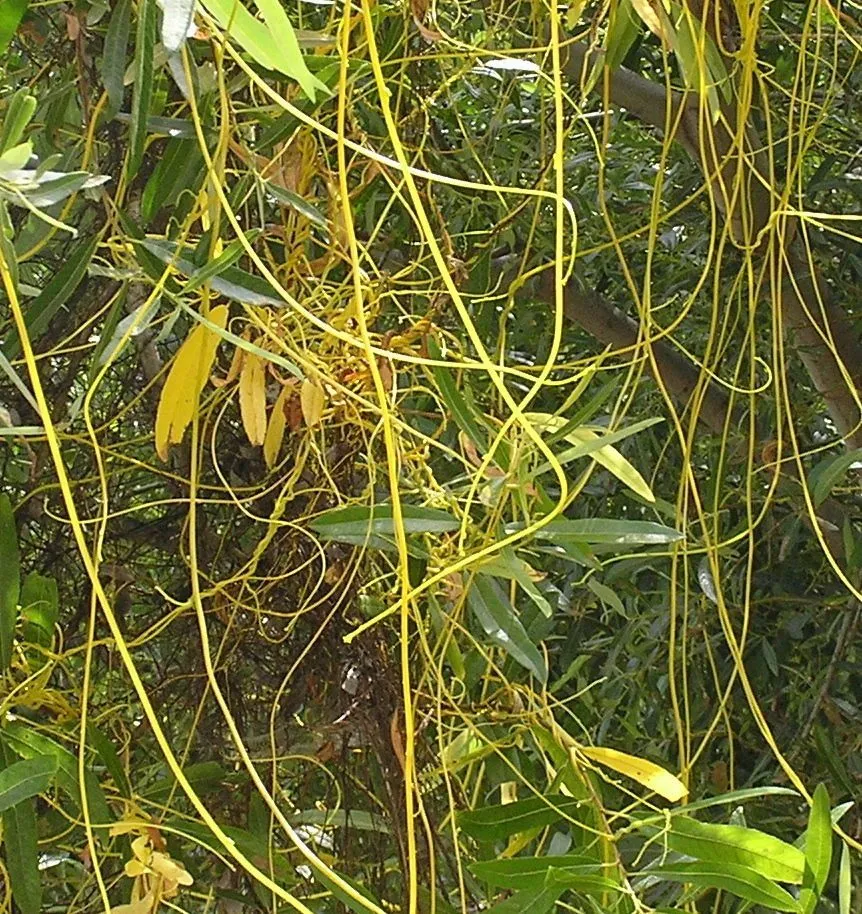
Author: Choisy
Bibliography: H. Zollinger, Syst. Verz. 2:134. 1854-1855
Year: 1854
Status: accepted
Rank: species
Genus: Cuscuta
Vegetable: False
Observations: Indo-China to Russian Far East and Temp. E. Asia
Japanese dodder, scientifically known as Cuscuta japonica, is an intriguing member of the Convolvulaceae family. This parasitic plant has garnered attention due to its wide distribution and its unique lifestyle that distinguishes it from many other flora.
First documented by Choisy and later elaborated in H. Zollinger’s systematic compendium (Syst. Verz. 2:134) during the years 1854-1855, Japanese dodder has a notable historical presence in botanical literature. Its range extends from Indo-China to the Russian Far East, encompassing various temperate regions of East Asia. This broad geographic distribution showcases the adaptability of Cuscuta japonica to different climatic conditions within these regions.
Japanese dodder is recognized for its distinctive appearance and parasitic behavior. Unlike most plants that rely on photosynthesis to produce nutrients, Cuscuta japonica derives its sustenance from other plants. It latches onto host plants using specialized structures called haustoria, siphoning off water and nutrients. This parasitism can significantly affect the health and growth of the host plants, often leading to detrimental effects on local agriculture and natural ecosystems.
The presence and spread of Cuscuta japonica underscore the intricate relationships that can exist within plant communities, including the complex dynamics of parasitism. Its study offers valuable insights into ecological interactions and the evolutionary adaptations that enable survival in a variety of environments.
Understanding the biology and impact of Japanese dodder remains a crucial focus for botanists and ecologists, particularly in regions where it is prevalent. Continued research and observation are essential for managing its spread and mitigating its effects on native and agricultural plant species.
Eng: japanese dodder
En: Japanese dodder
Ar: حامول ياباني
Az: Yapon qızılsarmaşığı
Zh: Jin deng teng, 日本菟絲子
Ja: Nenashi-kazura
Ko: 새삼
Fa: سس ژاپنی
Zh-tw: 日本菟絲子
© copyright of the Board of Trustees of the Royal Botanic Gardens, Kew.
© copyright of the Board of Trustees of the Royal Botanic Gardens, Kew.
© copyright of the Board of Trustees of the Royal Botanic Gardens, Kew.
Taken Nov 27, 2020 by anilkumar ayyappan (cc-by-sa)
Taken Jun 15, 2006 by EOL − Susan Schwartz (cc-by-nc)
Taken Jun 15, 2006 by EOL − Susan Schwartz (cc-by-nc)
Taken May 17, 2009 by EOL − Barry Rice (cc-by-nc-sa)
Taken May 17, 2009 by EOL − Barry Rice (cc-by-nc-sa)
Taken May 17, 2009 by EOL − Barry Rice (cc-by-nc-sa)
Taken May 17, 2009 by EOL − Barry Rice (cc-by-nc-sa)
Taken Oct 25, 2015 by EOL − H.T.Cheng (cc-by-nc)
Taken Oct 25, 2015 by EOL − H.T.Cheng (cc-by-nc)
Growth habit>: Forb/herb, Vine
Family: Myrtaceae Author: (F.Muell.) K.D.Hill & L.A.S.Johnson Bibliography: Telopea 6: 402 (1995) Year: 1995 Status:…
Family: Rubiaceae Author: Pierre ex A.Froehner Bibliography: Notizbl. Bot. Gart. Berlin-Dahlem 1: 237 (1897) Year:…
Family: Sapindaceae Author: Koidz. Bibliography: J. Coll. Sci. Imp. Univ. Tokyo 32(1): 38 (1911) Year:…
Family: Asteraceae Author: A.Gray Bibliography: Pacif. Railr. Rep.: 107 (1857) Year: 1857 Status: accepted Rank:…
Family: Fabaceae Author: Medik. Bibliography: Vorles. Churpfälz. Phys.-Ökon. Ges. 2: 398 (1787) Year: 1787 Status:…
Family: Aspleniaceae Author: (Cav.) Alston Bibliography: Bull. Misc. Inform. Kew 1932: 309 (1932) Year: 1932…